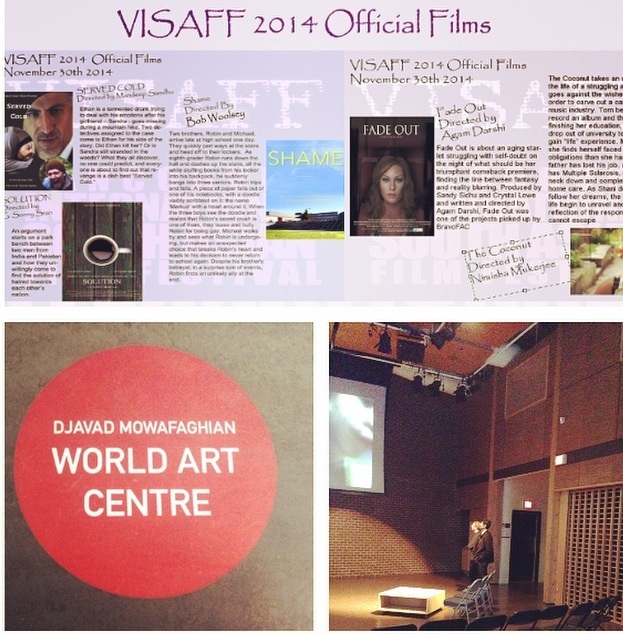On November 18th, the Canadian High Commission and the Canada-India Business Council (CIBC) came together with a delegation of Canadian producers and filmmakers to discuss the recently ratified Audio Visual Coproduction treaty.
The treaty was signed in March this year, and fully ratified by both Canadian and Indian governments in July. However, there has been a great deal of confusion over the requirements for a project to qualify as a Coproduction, and which government body will facilitate the projects on Indian side.
BCIFM has summarized the discussion into the following sections:
- Canadian and Indian Authorities & Expectations
- Current Push to Facilitate Projects
- A Change in Thinking and Approach
- Equity vs. Regulated film markets
- Currency, Contracts, and Tax
- The Distribution Issue
- Final Words of Advice
Karen Thorne-Stone, President & CEO of the Ontario Media Development Corporation (OMDC), moderated the session with the following speakers:
- Sheila de la Varende, Director of International Promotion, Telefilm Canada
- Kutu, (In lieu of Nirupama Kotru, Director of Films, Ministry of Information and Broadcasting, India)
- Daniel Iron, Producer, Blue Ice Pictures (Canada)
- Guneet Monga, Producer (India)
* Note: This article does not cover the guidelines of the coproduction treaty. For the treaty guidelines, regulations, and links see: Entry Into Force of the India-Canada Audiovisual Coproduction Treaty
Canadian and Indian Authorities & Expectations
Sheila de la Varende spoke on behalf of Telefilm Canada at the roundtable. Telefilm is the governing body for coproduction certification in Canada. They have facilitated coproductions and negotiated treaties with over 56 countries. Telefilm is looking to support coproductions that have a balance between creative and technical aspects that are reflected by the financing. For example, if the film is 50% financed by Canadian producers and 50% by Indian producers, the film should have a similar balance between key crew and cast, and ideally shot in both countries.
Telefilm is also looking to showcase Canadian and Indian talent, as Canadian federal financing gives films some freedom to cast actors who do not have the same star value as mainstream Hollywood and Bollywood actors.
The Ministry of Information and Broadcasting is the official coproduction authority of India. Nirupama Kotru, head of the Cinema division, was unable to attend the roundtable but Mr. Kundu stated that they are hoping that the coproduction treaty will increase the exposure of Indian talent and Indian landscapes beyond the NRI market. They are also very interested in supporting Television coproductions because of the booming Television industry in India.
Current Push to Facilitate Projects
It was stated for those present that the role of both coproduction authorities is to facilitate coproductions, not to regulate them. The Ministry of Information and Broadcasting is making efforts to nationalize incentives and guidelines for regional cinema programs. They are making a push in the Ministry to give all required clearances and permissions to films within 3 weeks of the application.
A Change in Thinking and Approach
However, it is very clear from the discussion that despite the supportive role of the authorities, the success of coproductions between Canada and India will require a change of approach, particularly from producers and distributors.
Daniel Iron stated that while producing the film Cairo Time, he had to do a lot of restructuring of the film to make it work with Canadian financing. The Third Party exemptions from the treaty allow film to be shot in countries outside of Canada and India if the story supports the decision. Cairo Time was shot in South Africa, but it was an Irish-Canadian Coproduction. Technically there was no Irish financial support or incentives, but because of a treaty between Ireland and South Africa it became necessary to go through Ireland to qualify for Canadian coproduction money.
While the Coproduction Treaty guidelines are flexible, the Canadian financial guidelines are quite regulatory. Canadian finance is federal and sometimes provincial money, and comes as a subsidy or grant that does not need to be paid back by the producers. As a result, productions need to qualify as a Canadian film according to a point system. The treaty allows for some of these points to be fulfilled by Indians, but it must reflect the financial structure of the film.
Equity vs. Regulated film markets
Because India is a strong Equity market for films and television, it is important for producers to have an understanding and educate themselves on the treaty regulations. It can require a lot of patience to find the right coproduction partner, and more patience to find out the best way to structure the film financing to best take advantage of the national incentives and tax structures.
Currency, Contracts, and Tax
Guneet Monga said that during the production of The Lunchbox, she had to do a lot of digging to work around the complicated Indian tax structures. From basic wording of the contracts to facilitating the mandatory tax audit after completion, producers need to be very mindful of the sources of their financing and how it is presented in the finance structure.
While one advantage of teaming up with Canadian producers is the federal incentives, India also has the advantage of lower costs and currency value. However, it is important for producers to keep in mind the potential changes in currency during the production and make clauses in the contract that fix the rate of exchange at the time of investment and hedging funds for protect against fluctuation.
The Elephant in the Room (Distribution)
However, all of the discussion about financial structure can be put aside for the most pressing issue of the coproduction treaty. In order for a production to qualify, both producers must assure distribution in their territory. For Canadian producers, this is a regular exercise. Before going into production, it is common for distributors to make an initial deposit for the distribution rights once it is completed. However, it is almost unheard of for Indian distributors to sign any assurance of distribution before a cut version of the film is ready (unless they are taking on the production themselves). Indian and Canadian authorities need to address this issue with each other and discuss how to best approach it. Should Indian distributors be educated on international distribution norms, or should the treaty relax its guidelines so that Indian producers can tie up with distributors after production?
The other issue is that Indian distributors expect worldwide rights when they buy a film from producers. There is a chance that if a producer tries to split the rights between Canada and India, they will lose their bargaining power and have to settle for drastically reduced rates.
Final Words of Advice
India is an organically developed industry that has never had any regulation from authorities, while Canada has an industry that has ben nurtured and protected by the government. As a result, both industries are drastically different and any changes will take a long time to develop.
An important note for both Canadian and Indian producers: Many Indian films are still made with ‘black money’, and commonly used to launder money. Official Coproductions require that the films be properly insured before production and audited after completion. Make sure that your partner’s financial sources are legitimate, so that the coproduction follow-up goes smoothly.
However, Mr. Kundu has assured that the ministry of Information and Broadcasting is very motivated to start regulating the Indian industry so that it can function with international standards and is making changes to take it in that direction.
Guneet Monga also states that in the last few years there has been a big change in Indian cinema, as producers are getting accustomed to sharing IP. This makes the industry much more open to making further changes to accommodate coproductions.
The most important thing for a successful coproduction is finding the right partner. Daniel Iron has had bad experiences with this and claims that follow-up after production can be disastrous if the partner is not educated in or motivated to get the film distributed and comply with the audits.
Sheila de la Varende encourages both Indian and Canadian producers not to just read the treaty but to go into detail on the financial regulations. Finding the right partner and educating them on industry norms is crucial to making it work. Telefilm is very open to encouraging coproductions, and will work with producers to make sure they don’t fall into any traps.
Finally, let’s not forget that the coproduction treaty is not just for fiction films. It is also for documentaries, television, and any Audio-Visual production.


